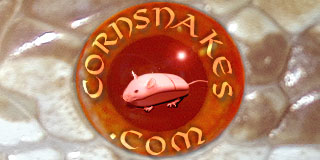Shiari
Blutterer
Having become phenomenally irritated at a 'advanced care, scientific' feeding guide that also includes age/length/weight that is horribly inaccurate and uselessly broad but is still being touted as the best one to use in many snake groups....
I have decided to put my knowledge and skills as a vet tech and snake owner/breeder to use. I am working to come up with actual, factual, accurate weight ranges based on length (in 6 inch increments) for snakes that are proper body condition (scoring 5/9). And because it can be hard to tell that a snake is becoming overweight before external signs are visible, especially for inexperienced keepers, I'm also working to come up with a simple, objective, guideline for that as well. I have something with high potential on that front already, but want to confirm with more animals.
So while I have the numbers from my own adults, and the adults from a local breeder friend, and some other people online, we definitely want more numbers to work with, and a variety of body types to learn from.
Here's what we need:
https://forms.gle/QtAwmiFa6fpBewFs8
We'd love to get data on older snakes, younger snakes, fatter snakes, skinnier snakes. If you've got a corn snake we want their age, weight, and a photo of them with a measuring device.
We've got about 50 datapoints already (a similar, published study in germany used 22 animals) but the more we have the more accurate we can make it.
I have decided to put my knowledge and skills as a vet tech and snake owner/breeder to use. I am working to come up with actual, factual, accurate weight ranges based on length (in 6 inch increments) for snakes that are proper body condition (scoring 5/9). And because it can be hard to tell that a snake is becoming overweight before external signs are visible, especially for inexperienced keepers, I'm also working to come up with a simple, objective, guideline for that as well. I have something with high potential on that front already, but want to confirm with more animals.
So while I have the numbers from my own adults, and the adults from a local breeder friend, and some other people online, we definitely want more numbers to work with, and a variety of body types to learn from.
Here's what we need:
- Your snake's age (in years)
- Your snake's weight (in grams)
- A top-down photo of your snake's entire body with an inch or centimeter reference. (see photo below)
https://forms.gle/QtAwmiFa6fpBewFs8
We'd love to get data on older snakes, younger snakes, fatter snakes, skinnier snakes. If you've got a corn snake we want their age, weight, and a photo of them with a measuring device.
We've got about 50 datapoints already (a similar, published study in germany used 22 animals) but the more we have the more accurate we can make it.


